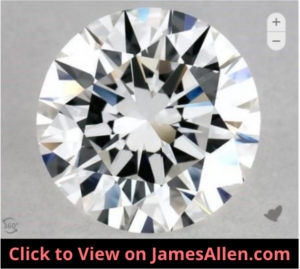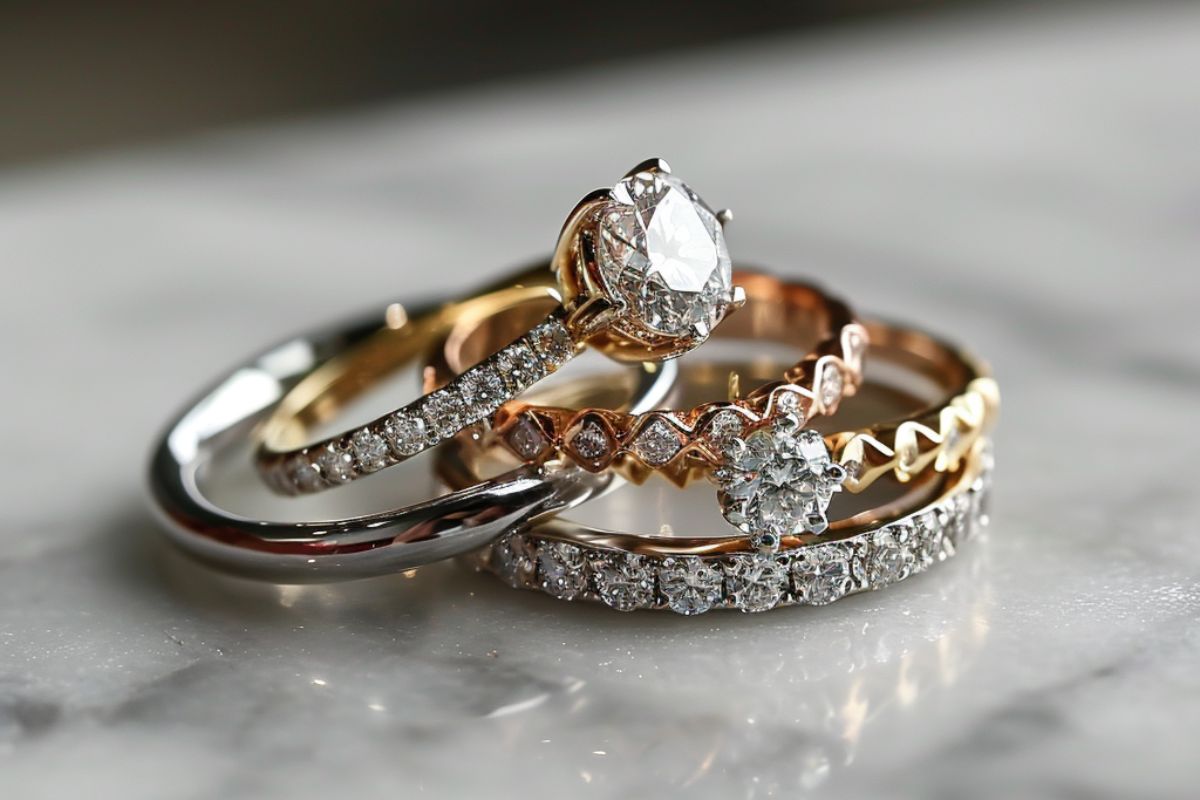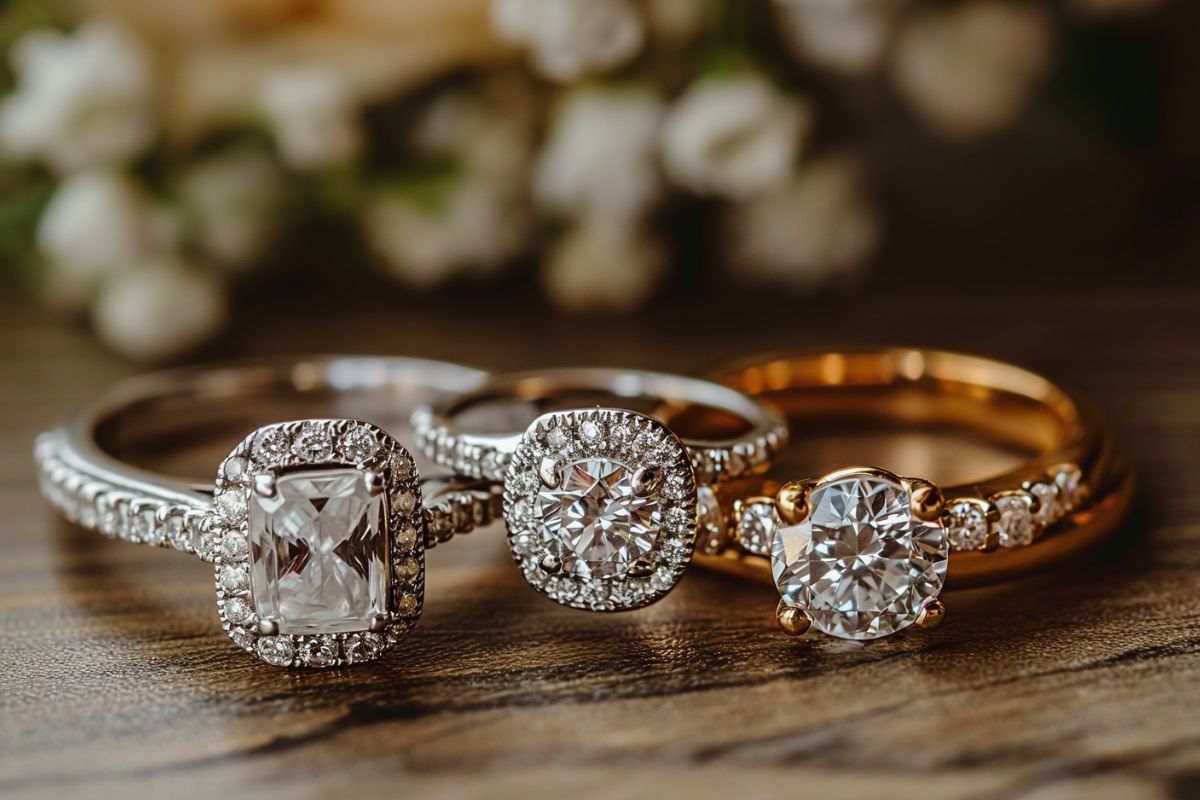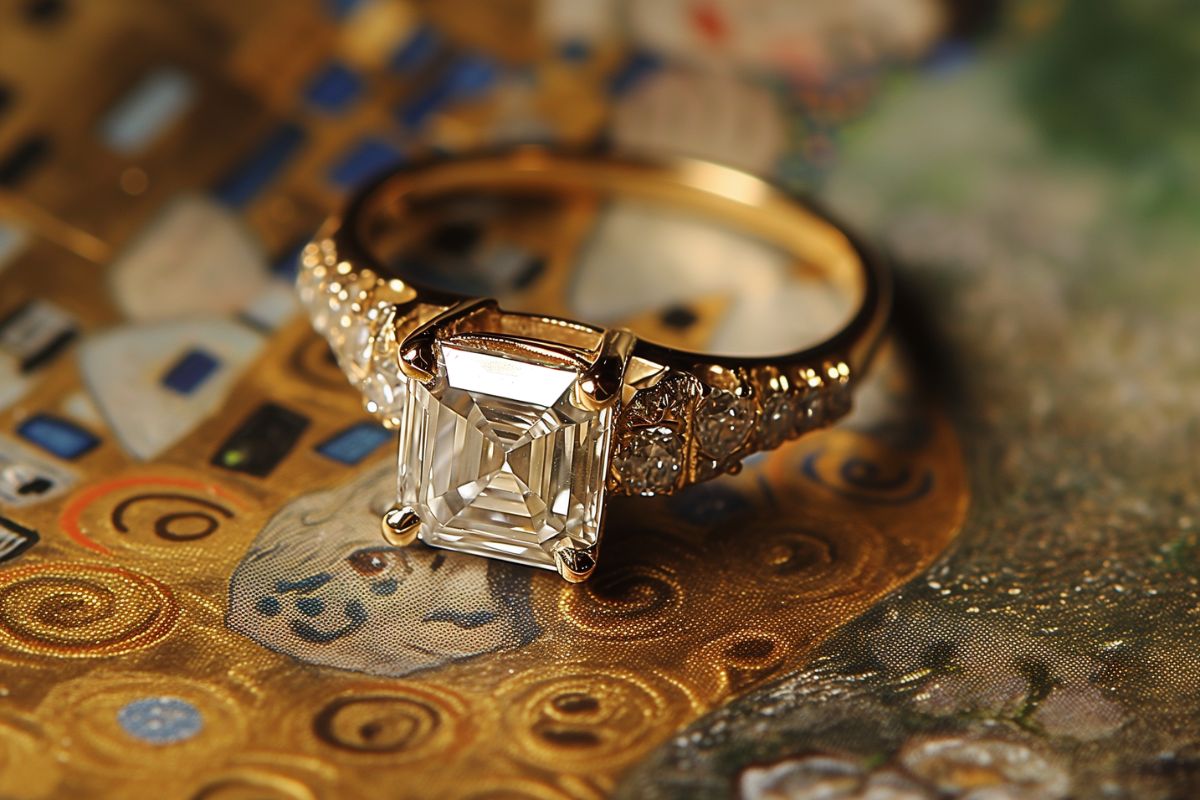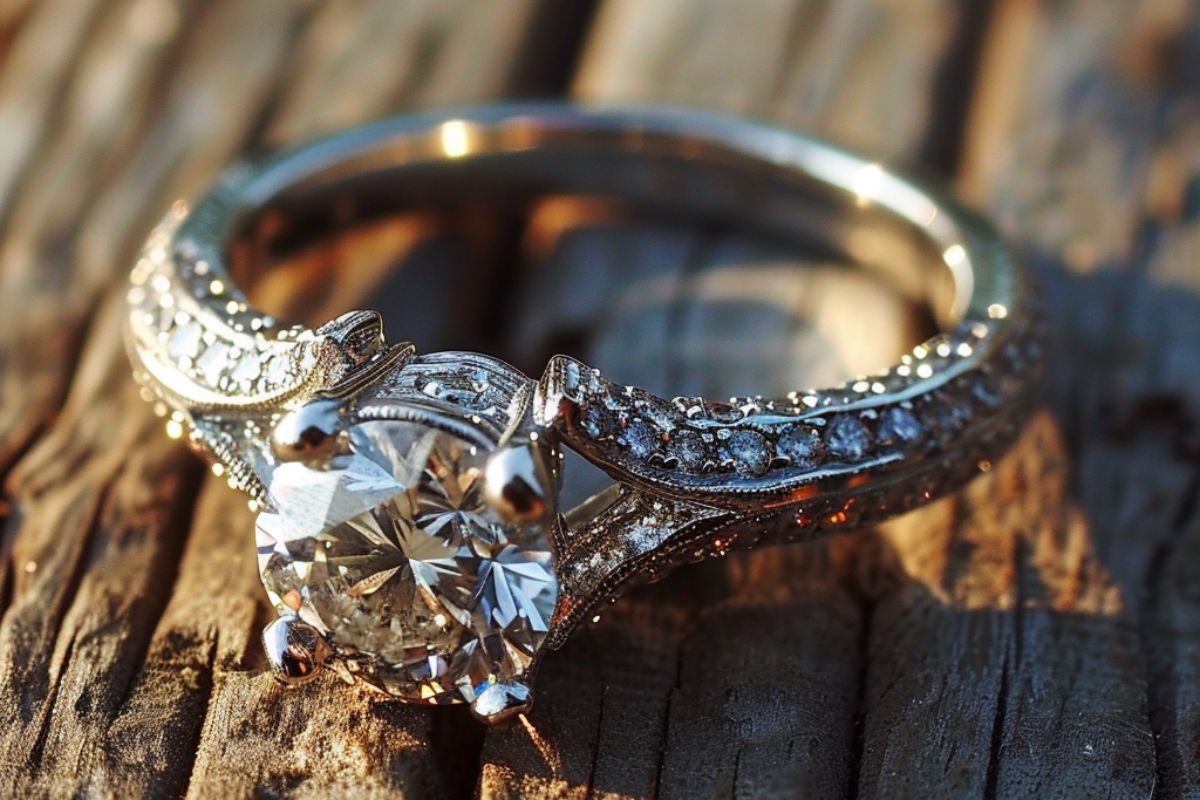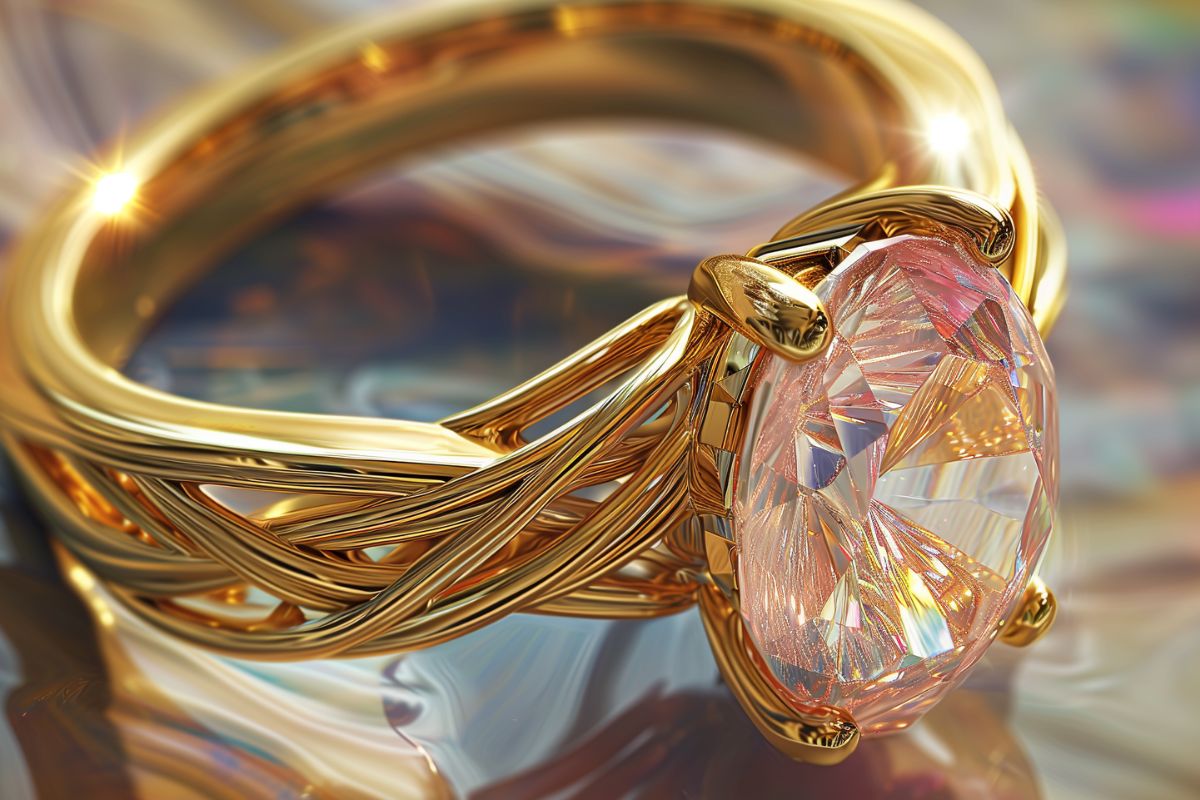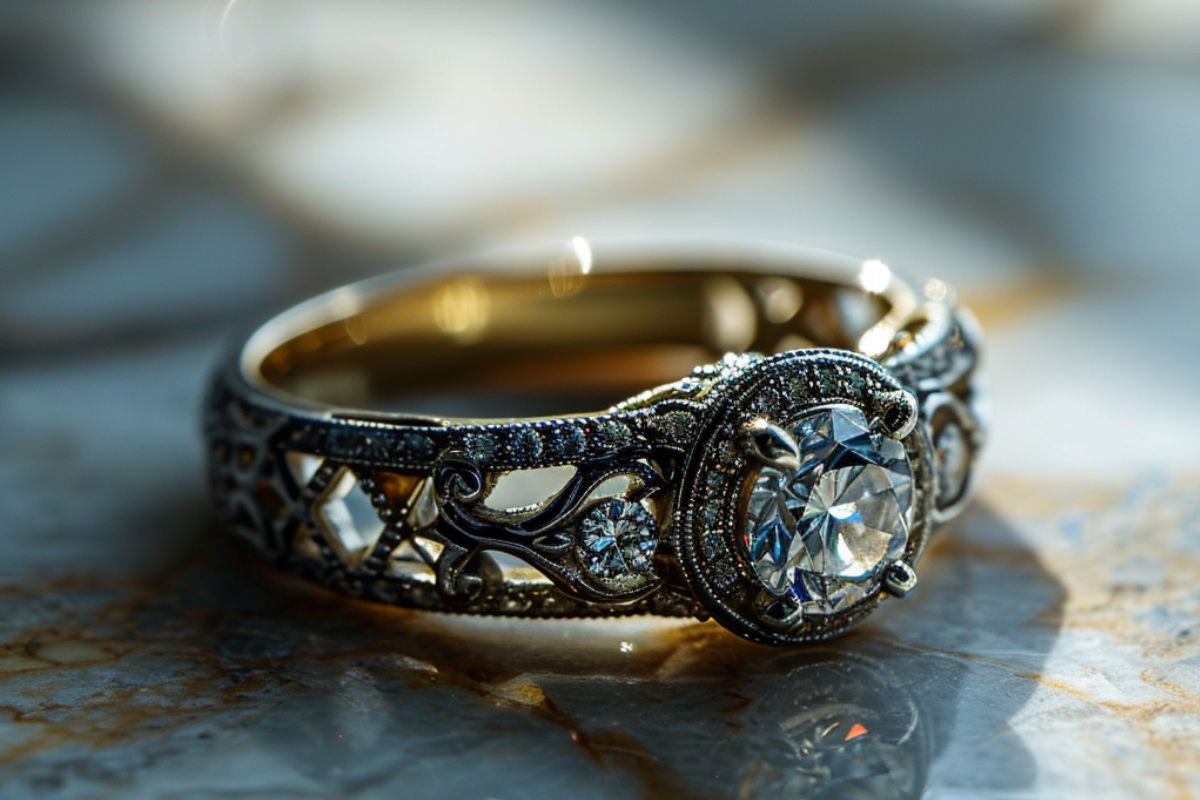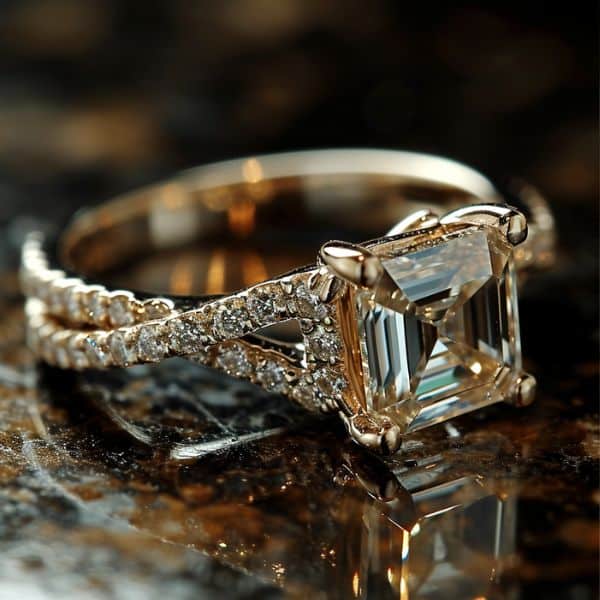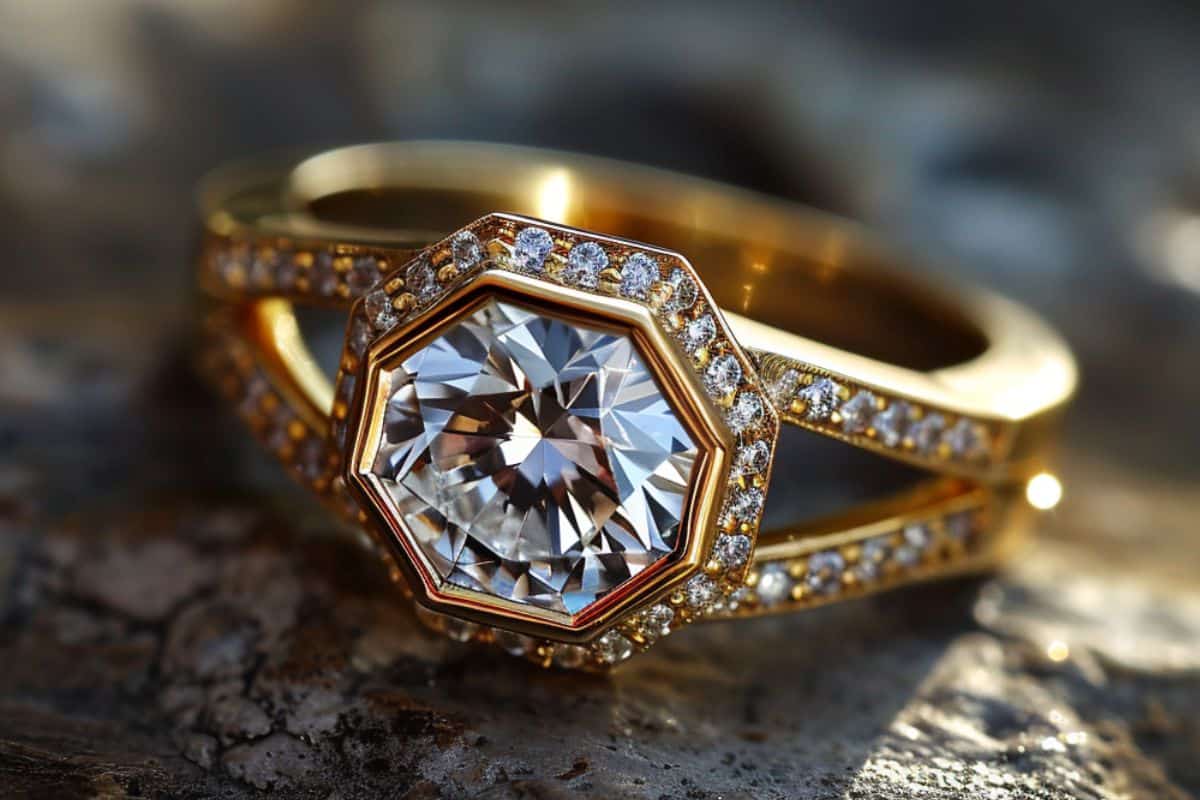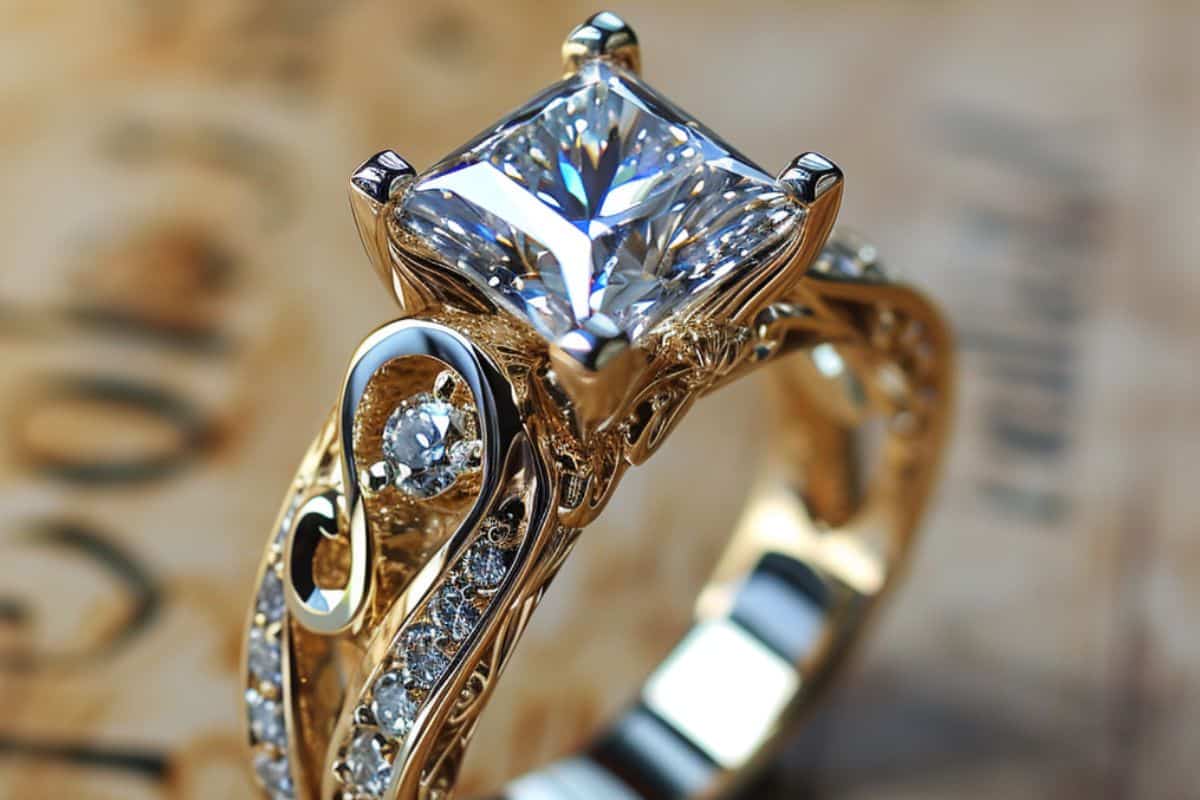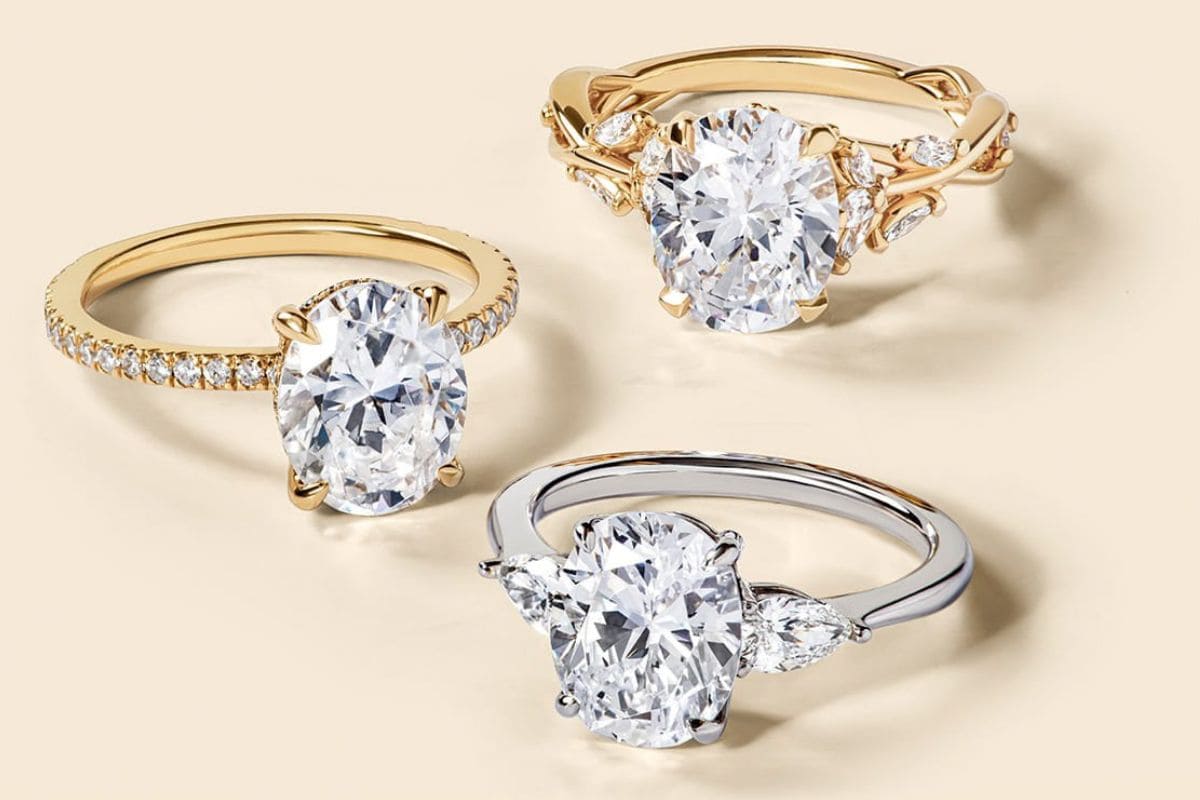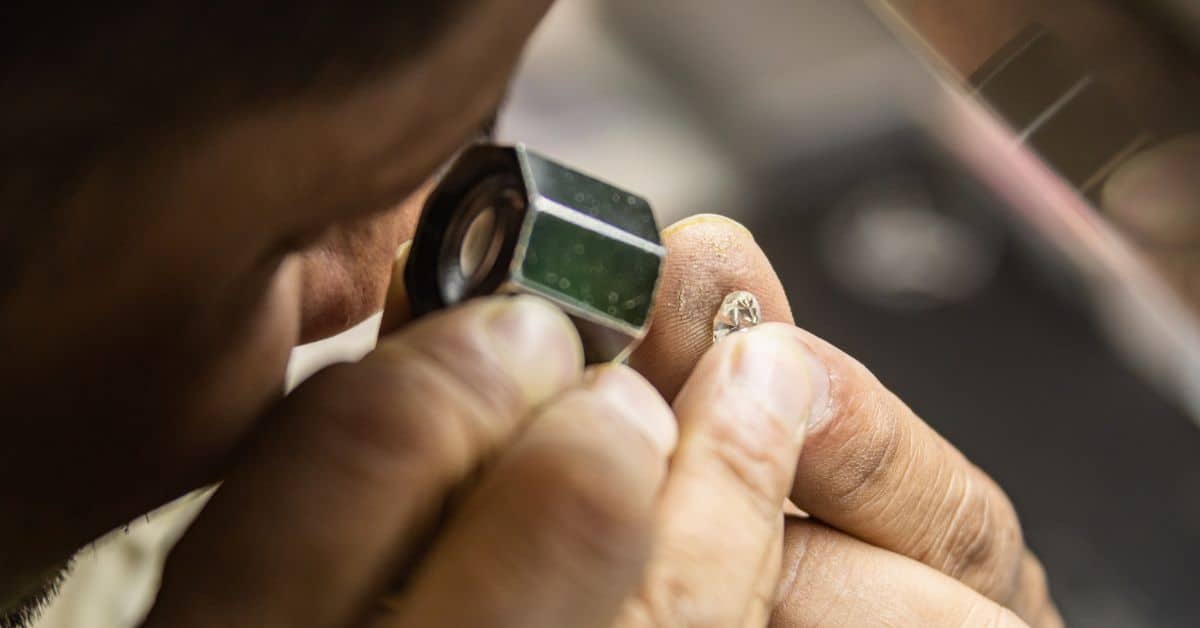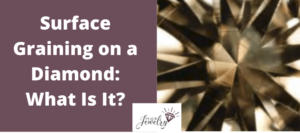
Clarity is determined by numerous factors, but overall it measures a diamond’s cleanliness and transparency.
You may have come across a diamond where the report notes surface graining.
Let’s explore surface graining on a diamond, including:
- How it affects clarity
- If diamond cutters can remove it
- How it impacts the cost
- How it compares to inclusions
What is Surface Graining?
Surface graining on a diamond appears as colored or transparent lines resulting from defects in its crystal formation. It occurs naturally when some areas of the diamond grow faster than others.
Most surface graining is invisible to the naked eye and only shows when viewed at certain angles with high degrees of magnification.
It’s often confused with polish lines.
Facets are polished individually in the same direction, so polish lines end at the junction of two facets. Surface graining, on the other hand, crosses over multiple facets or changes direction on the same facet.
How Does Surface Graining Affect Clarity?
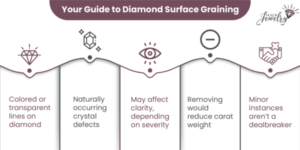
Surface graining has the potential to impact the clarity grade of a diamond, depending on its size and visibility. Organizations such as the Gemological Institute of America (GIA) grade clarity based on the number, type, size, and location of inclusions and other imperfections.
The presence of surface graining can prevent a diamond from receiving a flawless (FL) grade, so it wouldn’t sell at that premium.
It would instead be internally flawless (IF), meaning there are no visible inclusions at 10X magnification inside the diamond.
If the surface graining was significant, it could result in a VVS1 grade, but it’s unusual for this characteristic alone to warrant a grade lower than that.
For example, this one-carat diamond earned an IF clarity grade from the GIA.
Its report shows no inclusions on the clarity characteristics plot.
But in the comments of the “Additional Grading Information” section, it notes, “Surface graining is not shown.”
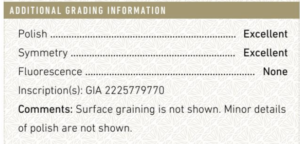
If the diamond has surface graining, that’s where it’ll appear on every report.
The reason it wasn’t given a FL clarity grade is because of the surface graining. Its polish is graded “Excellent,” so there aren’t issues there.
But you wouldn’t notice a difference in clarity between this diamond and one designated flawless.
The surface graining is minor and transparent, but the GIA does note its presence when viewed with magnification.
One reason to be cautious about surface graining’s influence on a diamond’s clarity is if the report states the clarity grade is because of the graining.
The GIA clarity plot will likely have no inclusions, making it appear as a clean diamond. But there’s a significant difference between surfacing graining not shown on the report versus it affecting the overall grade.
Why Don’t Diamond Cutters Remove It?
Diamond cutters don’t remove surface graining by additional polishing.
It often extends into the stone, so polishing off the top layer wouldn’t solve the issue. Another reason is because the graining is part of the diamond itself, not a result of human error.
If a cutter were to rid the diamond any instance of surface graining, they’d be forced to cut away too much. The diamond would sell for a lower price because of its reduced carat weight.
The cost-benefit analysis indicates it’s not worth it because most cases of surface graining have little impact on the diamond’s overall quality.
Removing any carat weight has a significant impact on its selling price.
Price Impact
To understand surface graining’s effect on price, you can compare two diamonds that are similar across all areas except for the presence of surface graining.
For example, let’s take two diamonds that each have the following qualities:
- Carat: 1.00
- Cut: Excellent
- Color: D
The only difference is one diamond earned a FL clarity grade (left), and the other was graded IF (right) because of surface graining.
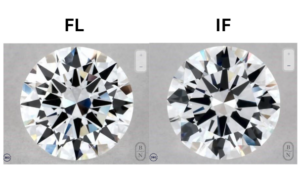
The FL diamond is priced at $20,060, and the IF flawless diamond with surface graining costs $12,190.
This is a 64 percent premium because of its surface graining.
The price difference would be more pronounced if the surface graining resulted in a VVS1 grade. Some VVS1 diamonds, if all other qualities being equal, are priced as low as $5,700.
This can actually result in strong value. If the blemish has no apparent impact on its appearance or performance, you can add that savings toward a higher carat weight, a quality setting, or improved cut and color grades.
Surface Graining vs. Internal Graining
Surface graining is different from internal graining because internal graining is found inside the diamond instead of on its facets. Internal graining is broken into two categories: whitish and reflective.
Whitish graining reduces a diamond’s transparency and is incorporated into its clarity grade. Check out the high-resolution image below of whitish graining.
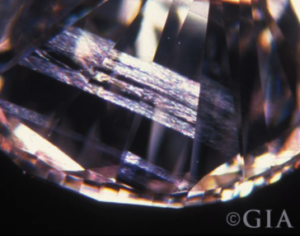
The crystal structure’s defect alters its refractive index. This causes light to travel through it even slower. The result is the diamond exhibits less brilliance.
Reflective internal graining can be seen as the diamond is titled at certain angles. It also results from distortions in its crystal structure that occurred during its formation.
Surface and internal graining are similar in that they’re often invisible to the naked eye and only seen when light hits a diamond at a particular angle.
Additionally, graining can appear so close to the surface that it’s difficult to determine whether it should be considered surface or internal.
Is It a Dealbreaker?
A diamond with surface graining can still be the right purchase because of its minimal impact on the diamond’s appearance and brilliance. It’s not a dealbreaker.
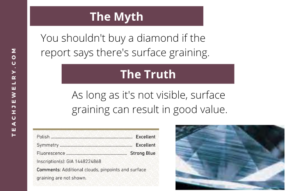
It often reduces its price without a proportionate decline in its overall quality, which means it’s sold at a value.
My advice is to view the diamond in-person at the retail store or with high-quality photos of the actual diamond online.
But you’ll want to know if the graining is visible to the naked eye at multiple angles and if its glimmer is diminished because of those streaks. If possible, give it a twirl to see how that changes its appearance.
Once you know how the surface graining affects the diamond, you can turn your focus to the other important aspects of your decision.

Jacob Clarke
Jacob Clarke is the founder of TeachJewelry.com.
He earned an Applied Jewelry Professional Diploma from the Gemological Institute of America (GIA) and now brings you essential information about diamonds, settings, and more.
Jacob has consulted with leading jewelry brands, and his work has been cited in Clean Origin, Diamond Nexus and industry publications.
He's also a member of the International Gem Society.
He enjoys discussing jewelry with readers, so contact him with any questions at jacob.clarke@teachjewelry.com.

